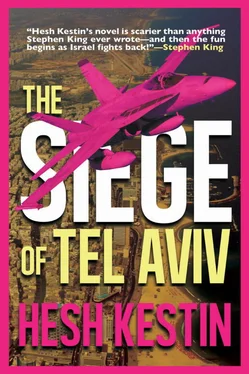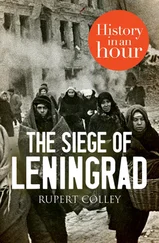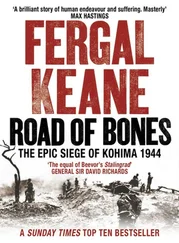Now pushing seventy, Tawfik Ali is well prepared to unleash upon an unsuspecting enemy the full force of his devoted armored corps, whose Bedouin tank commanders are as loyal to the major general as to the king himself. But unlike the men under his command, who love him for having embraced Islam, he has never been comfortable with its ingrained hatred of the Jews, nor does he share the British nobility’s disdain for the Hebrew race: his roommate and best friend at Sandhurst had in fact been one Puffy Bornshtain.
In truth, it hardly matters to Major General Tawfik Ali whether the opposing army is commanded by Jews, Iraqis, or Martians—only that there is a designated enemy, a military target marked for destruction. This is business.
IN A LONG DRAINAGE ditch within sight of hundreds of IDF jets on the tarmac of the military field adjacent to Ben-Gurion Airport, sixty Hamas commandos crouch and wait. Though Shia Iran’s military planners see no future for Hamas, whose members are Sunni and Palestinian, and thus doubly irredeemable, these fighters will play a key role in the coming battle to liberate the holy land.
A day earlier, three trucks painted in IDF colors and bearing IDF license plates crossed beneath the sand dunes from Gaza, which Hamas controls, into Israel proper. The half mile of paved tunneling that permitted this took almost a year to construct. Working at night under the very eyes of the Israelis, Hamas removed tons of sand—a good deal of it in buckets—until they got earthmoving equipment into the tunnel to create a sub-rosa highway just big enough for Ford F-150 half-ton trucks. Though Iranian engineers planned and supervised the operation, there was no question in the eyes of the Hamas leadership that the terror organization would later be seen as key to the success of the entire war. They would be wrong. None of the states involved—Egypt, Syria, Jordan, nor Iran—turned out willing to see a Palestinian state emerge in what they were already calling “Former Israel.” In every detail of post-war planning was embedded the unspoken message “Fuck the Palestinians.”
But at this stage, the Palestinians are needed. No other fighting force can provide the Hebrew speakers necessary to get through a dozen roadblocks. Most members of this force are graduates of Israeli security prisons, some specially trained by diction coaches in the art of sounding like native-born Israelis (because there is no p in Arabic, the students are trained not to use words like papa , which would come out baba ). Some have been trained to speak Hebrew with French or English or Russian accents, as would any group of IDF soldiers. A dozen, Circassians, are blond and blue-eyed. Their uniforms, down to the hand-painted slogans on their helmets and the mud on their brown paratrooper boots, are IDF issue, stolen by Bedouins from army bases in the Negev. For this one performance, they have been rehearsing six months, speaking only Hebrew. Should one unlucky commando fall out of a truck, he will not give the others away. Even the cigarettes in their placket pockets are Israeli. The bandages in their medics’ pouches are marked MADE IN ISRAEL. The orders their commanders carry are beautifully forged IDF documents. They are perfect replicas of Israeli paratroopers moving in perfect replicas of Israeli military trucks through a very real and very vulnerable Israel.
Having taken up position in the drainage ditches surrounding this Israel Air Force facility, like similar infiltrating forces in place at four other airfields, they appear to be IDF infantry in protective posture, their backs to the F-16s arrayed in ready formation.
At precisely 3:55 a.m., the darkest moment of the night, they turn around and train their weapons on the planes. A phalanx of TOW missiles sails through the air. At each airfield, the tarmac is a sheet of flames.
The Israel Air Force is no more.
IN HIS TEHRAN WAR room four stories underground, General Niroomad watches on the wall of screens as an orbiting Iranian satellite transmits real-time video of Israel’s F-16s burning on the ground.
He turns to his operations officer and gives the command. “Launch air.”
SIX SECONDS NORTHEAST OF Jerusalem, twenty-eight Sukhoi SU-24s fly low in broken formation to avoid Israeli radar. This close to target, it will hardly matter. Israeli countermeasures are already compromised. The Syrian and Iranian pilots own the skies. According to plan and confirmed by Iranian reconnaissance, the IDF ground-to-air shield is all but destroyed. Because the enemy planes fly low, what is left of Israel’s heat-seeking rocket capability must arc down from 20,000 feet to as low as one thousand. Of this they are capable. But Syria’s Russian military advisors, sitting safely in the Caucasus just over the Turkish border, have launched a miasma of heat-producing Yakovlev Pchela drones. As predicted by the theorists in the Nikolai Zhukovsky Air Force Engineering Academy, the Israeli missiles home in on the drones. The Russians call them flying hair dryers. All twenty-eight Sukhois penetrate Israeli air space as though it is undefended.
Which it is.
At this point radio silence is no longer necessary.
The mission’s commander opens communication. “Chief to all Indians,” he says, first in Arabic and then in Persian, which phrase he has memorized. “We have penetration. Combine to wing.”
For answer, twenty-seven pilots press their speak buttons and howl like wolves. The pilots call their unit the Wolf Pack. The planes move off their random positions and reform behind the lead aircraft, a scattered flock of geese that becomes a series of straight lines and then a wing. And then a flying wedge.
“Chief to all Indians, home in on Buffalo.”
As one, each of the pilots logs onto his GPS-based mission profile. Each device holds the coordinates for preselected targets. Except for Israel Police headquarters in Sheikh Jarrah, all are in West Jerusalem: the Knesset, the Prime Minister’s Office, the Defense, Interior, Justice, and lesser ministries, Israel State Television and Radio, the headquarters of a number of specialized security services, secondary military installations on the perimeter, Jerusalem’s Mahaneh Yehuda fruit and vegetable market, and certain symbolic sites, such as the Israel Museum, the Yad VaShem Holocaust Memorial, the Central Synagogue. The entirety of mostly Arab East Jerusalem, including the Old City, is spared, the Jewish and Armenian quarters to be dealt with later, along with the remaining Western Wall of the Holy Temple, Judaism’s holiest site. To attack these targets from the air would risk damaging the Sacred Precinct, the tel upon which is built the Dome of the Rock and the Mosque of Omar, under which lie the ruins of the Holy Temple itself, which according to Islamicist propaganda never existed.
Wolf Pack’s commander need hardly remind his pilots to limit their depredations to their designated targets. The Sukhois carry just enough destructive material to do the job. But he makes sure. “My Indians, avoid the railroad lines and bus station, and protect our holy places. Good hunting! God is great!”
DANCING WITH GAY MEN is not Alex’s preference. But with women there was a problem. Alex had had a few girlfriends, but in man-short Israel—emigration and war tends to thin out the number of available males—even the most desperate women are not that desperate. Alex’s sexual orientation simply does not correlate with his sartorial preferences. Neither is cavorting on the dance floor with straight men an option. What straight men seek Alex cannot supply. Nor can he take to the dance floor in lesbian bars. The bulge in his pants tends to give him away. Surprise: lesbians are not interested in straight men disguised as women. So when he wishes to dance as a woman he is all but compelled to dance with gay men, which is what he is doing at a beachfront bar called Ema, Hebrew for mother.
Читать дальше












